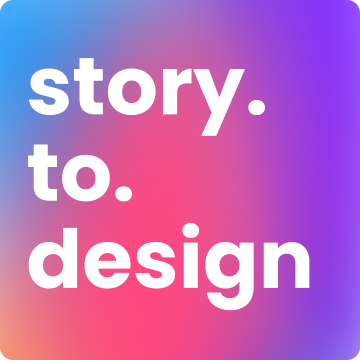The Verge interviews Dylan. Noise & Texture. Affinity V2.
Hi there! Figmalion turned 3 years old on Friday. Last year I switched from a bi-weekly to a weekly schedule, as there are just too many things to write about. After 90 issues and 2,032 links, the Figma community is more vibrant than ever and quite often I can’t keep up with all the news. Reply to this email if you have any suggestions or birthday wishes!
Do not forget about the Virtual Schema by Figma event on Wednesday, November 16th. The in-person conferences dedicated to design systems took place earlier this month in New York, Tokyo, and London, and now it’s time for the virtual crowd to tune in. Attendance is free, so register today.
— Eugene
Sponsor
Story.to.design
Generate full Figma libraries straight from Storybook, and keep them in sync. Less grunt work, more design time!
What’s New
Why Figma is selling to Adobe for $20 billion, with CEO Dylan Field
Nilay Patel from The Verge interviews Dylan Field for the Decoder podcast. It’s the longest and sharpest interview since the acquisition — an absolute must-read. “So I wanted to talk to Dylan about the deal, why he’s doing it, how he made the decision to sell, and what things he can do as part of Adobe that he couldn’t do as an independent company. Dylan’s also a pretty expansive thinker, so after we talked about his company getting the “fuck you” money from Adobe, we talked about making VR Figma for the metaverse and AGI, which is artificial general intelligence, or the kind of AI that can fully think for itself.”
Taking cues from code
Figma Product Manager Jacob Miller’s keynote at Schema Conference on navigating the increasing complexity of design systems and what we can learn from the world of code.
“It’s in Figma.”
This tweet by the design company R/GA made rounds last week. I definitely enjoy seeing all the pushback in the replies. In my Figma files the ratio of participating designers to non-designers is somewhere between 1:5 and 1:20, depending on the project — a night-and-day difference from the old days.
Using Figma
Realistic textures with Noise & Texture plugin
Vijay keeps teasing Rogie’s new plugin Noise & Texture. You’ll notice that it’s currently in beta and requires a code to unlock, but if you look closely at this thread you may find one.
Killer Auto Layout tutorial
MDS is killing it with a killer Auto Layout tutorial. Who cares if it’s a bit late for Halloween!
Hover animation
A really cool hover effect, and a smart way to achieve it.
How to draw a rocket icon
Steve Schoger with a new step-by-step tutorial. See also another one on drawing a briefcase.
Infinite loading circle animation
Jan Mraz with a short video tutorial.
Spirited Away
Beautiful interactive animation by Figmatelier pushes the limits of Figma. Don’t miss the community file as well.
Plugins
text-to-figma
While it’s easy to dismiss this and other similar projects as impractical toys, I believe they’re giving us a glimpse into the future of creative tools. Years ago every project started as a blank canvas, while now we often build on a foundation of existing design systems. I can imagine that one day the AI will generate the first iteration of the UI based on the existing design system, patterns, tone, and voice of the project.
Cool thing
The next generation of Affinity apps
Affinity announced Version 2 of the Designer, Photo, and Publisher apps on November 9th. Their suite provides the strongest alternative to Adobe Creative Cloud, and now is an important time to support indie alternatives. Affinity offers the Universal License on all platforms with just one payment (currently 40% off!) and without subscriptions.
I’m not a heavy user by any means, but bought the previous version of Designer back in 2016 and been using it occasionally. The app was regularly updated all these years, so I just ordered the Universal License and set up the new apps. Hope after climbing the learning curve they’ll become a great addition to my Figma-centric workflow.

